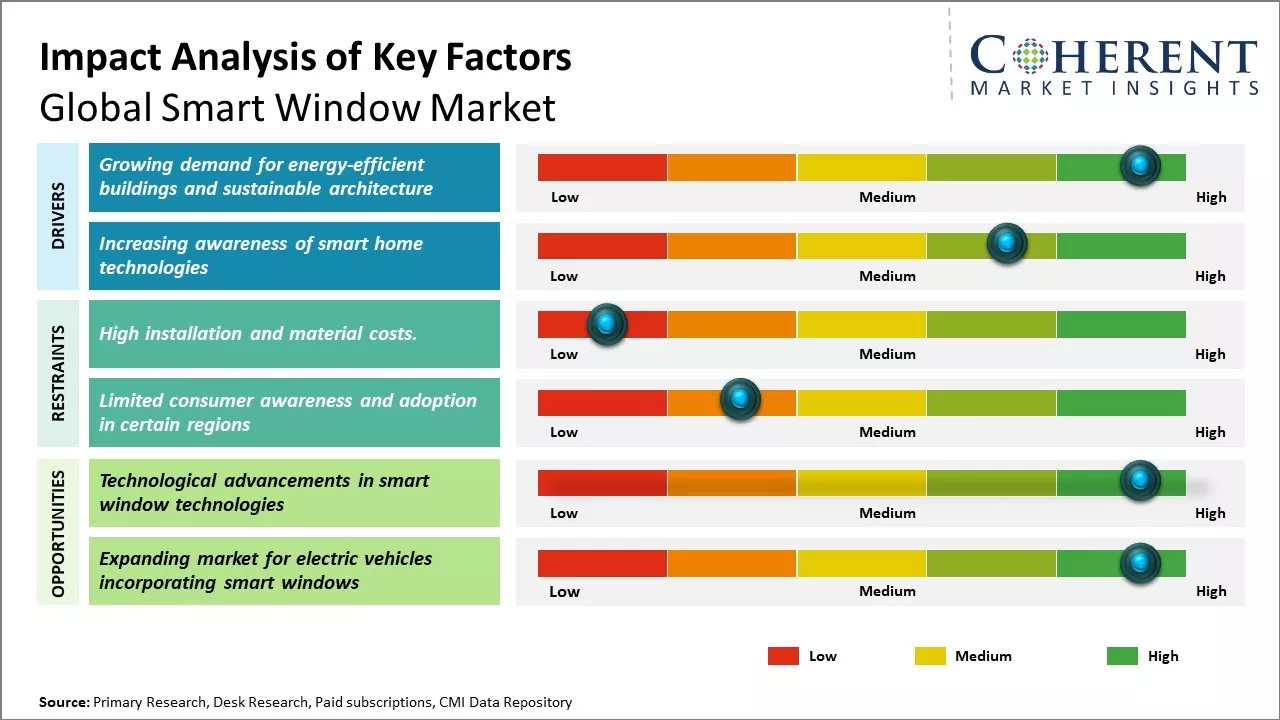Global smart window market is estimated to be valued at US$ 6.31 Billion in 2025 and is expected to reach US$ 12.00 Billion by 2032, exhibiting a compound annual growth rate (CAGR) of 9.6% from 2025 to 2032.

To learn more about this report, Request sample copy
The growing construction industry across the world especially in developing countries is the primary factor driving increased demand for smart windows. The smart window market is expected to witness significant growth over the forecast period. Advancements in smart glass and sensor technologies that allows windows to change properties according to outside temperature, light and weather conditions are increasing their adoption. Growing focus on energy conservation and rising consumer preference for aesthetically appealing and multifunctional windows will further boost demand for smart windows among residential and commercial end-users. Rapid urbanization along with increasing green building construction will provide continued impetus to market expansion through 2032.
Market Driver - Growing demand for energy-efficient buildings and sustainable architecture
Energy efficiency in buildings has become a major focus area globally in the past decade. With rising energy costs and greater environmental consciousness, both commercial and residential builders are under increasing pressure to develop green and sustainable infrastructure. Smart windows provide an effective solution to significantly reduce electricity consumption from heating and cooling in buildings. By controlling the amount of sunlight, heat and glare entering a building, smart windows help maintain optimal and comfortable indoor environment while minimizing the need for conventional air conditioners and heaters.
As smart window technology continues to advance with the development of more accurate sensors and controls, architects have started incorporating these windows more widely in their designs. Premium office towers and luxury residential projects especially emphasize the use of smart glazing to highlight their green credentials and appeal to environmentally conscious tenants and homeowners. Both new construction as well as large-scale retrofitting projects present major market potential. Government regulations and building codes in many countries now mandate or incentivize the adoption of energy-saving solutions like smart windows. This is compelling more builders to invest in integrating these windows during planning and development stages itself.
Leading manufacturers are cognizant of the market shift towards sustainable architecture and are continuously enhancing their product lines. While historically high costs were a limitation, mass production and new low-emissivity coating technologies have brought down per unit prices significantly. Affordable smart window options are now available for mainstream commercial and housing segments beyond the premium tier. With their ability to deliver sizable savings on energy bills along with aesthetic advantages, smart windows are showing high return on investment for building owners and developers over the long run. This is helping strengthen the business case for wider adoption going forward.
Joining thousands of companies around the world committed to making the Excellent Business Solutions.
View All Our Clients